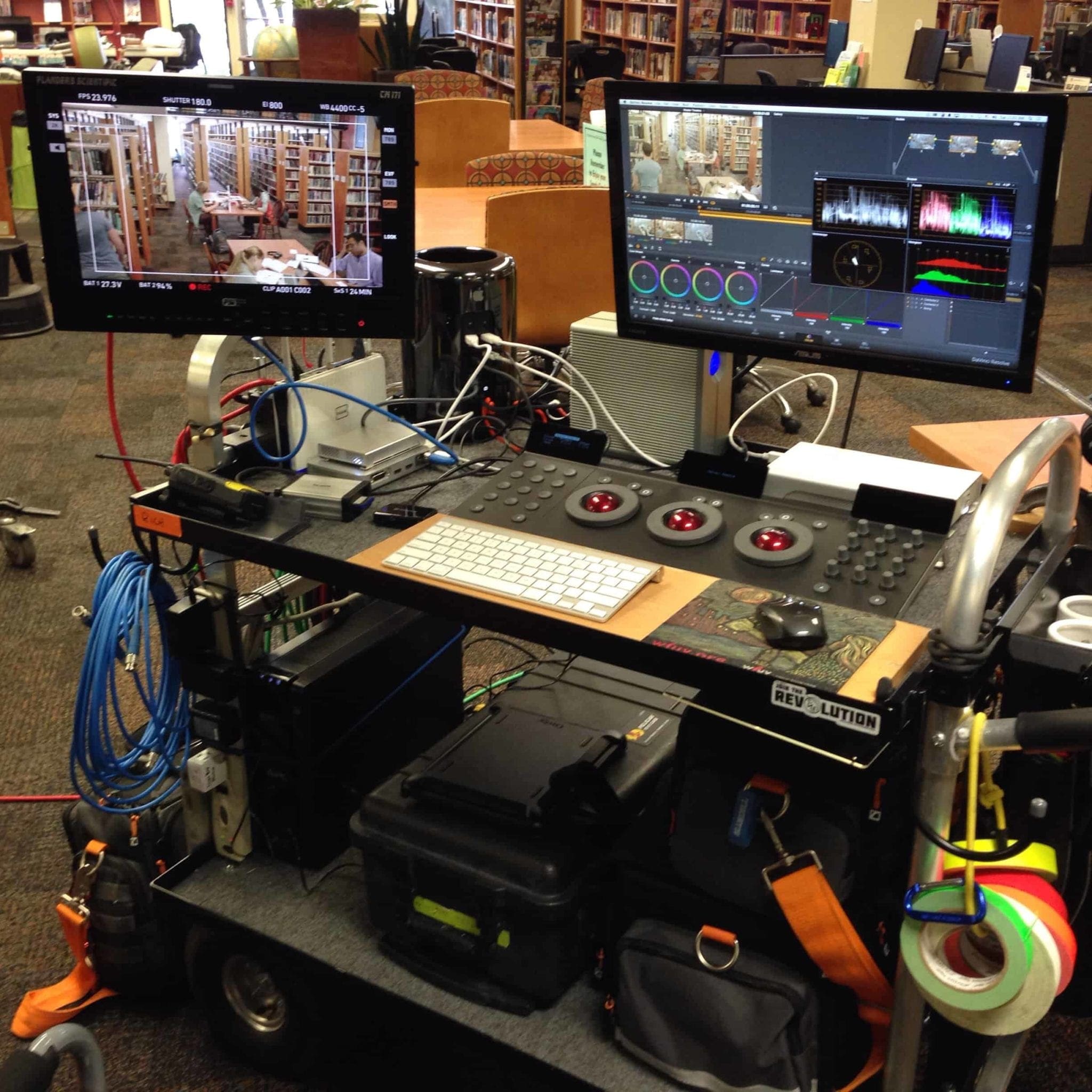Another acronym to deal with, DIT. Of course, it’s once again a part of the camera department alongside a couple others; AC (Assistant Camera) and DP (Director of Photography). DIT stands for Digital Imaging Technician. As far as a union hierarchy goes, they are on par with the 1st AC. However, a 1st does have more authority of how the department runs on set. Surprisingly enough, they’re used for more than just phone charging stations!
General DIT Information
This job is actually fairly recent in relation to how long films have been around. Now that digital cameras are the main way to shoot a film, DITs have become much more abundant and important. You simply didn’t require one when you were shooting movies on actual film, and you’ll learn why soon! A DIT works very closely in creating the desired look of a movie or show. Therefore, he is in constant contact with the Director of Photography over the course of shooting. One benefit (other than being able to learn a ton being beside an experienced DP all day) is that a DP usually finds a DIT he likes and brings him on all the shows he does, which means constant work for you! However, becoming a DIT is no easy task. It requires extensive knowledge of LUTs, (Look Up Tables) color grading programs, (DiVinci and Resolve) and also huge start up costs. A DIT is required to have a DIT station where he can work, and this can be comprised of hundreds of thousands of dollars worth of equipment at times. Don’t worry, you don’t need all this right away and if you’re on the right set you’ll be given a good rental for your equipment. Some productions will have the DIT do some work creating LUTs in pre-production so that they are ready by the time principal photography rolls around. Once shooting stops, so does the DIT’s job. The post-production house will handle it from there.

Your battle station.
So What Do They Do?
A DIT has multiple tasks to do throughout the day on set. Let’s take a look at each one.
Data Wrangling
Once a media card is full of footage, the AC will reload the camera with a fresh mag and take the “hot” one directly to the DIT for processing. This is typically done as quickly as possible since the footage on that small piece of metal is worth tens of thousands of dollars, sometimes even more. Once the DIT has it they will put it into his station and begin making multiple back ups of it. They will keep these backups on their system until (at least) they get an email from the post-production house saying that it is okay for them to delete the footage from their hard drive. Before that can happen the DIT needs to download the footage onto a portable hard drive and send it to the production house. This usually happens at lunch and at the end of the day.
Coloring
On bigger productions, the camera will usually shoot in raw. Once the footage is on their station they can add the LUT that was created previously to the footage and begin making minor adjustments to it, initial to their discretion then from the DP’s. This footage will later be used as “Dailies” for the higher ups to see. Sometimes a DIT will have to create a special LUT for a specific scene, which they can work on throughout the day side by side with the DP.
P.S. If you want to cheat, get your LUTs from Lutify.me. They have beautiful packages to work with and enough variety for every situation you can think of! Plus, if you become one of our Key Members, you’ll get 10% off!
Video Village Management
Another important aspect of the DIT station is the monitors. He will be receiving a feed directly from the cameras so that the DP is looking at the best possible image. This feed will then be wired or transmitted to a set of monitors for the director and finally a set of monitors for the rest of the crew. The DIT will have control of the feed and can change it on all corresponding monitors as necessary. While shooting, a DIT will often analyze the shot to make sure everything in the frame is okay such as reflections, lens flares, focus, bogies, etc. they can also double check the camera settings as well. They are responsible for relaying information and camera settings to the camera crew from the DP.
Do You Want To Be A DIT?
Let us know what you think about DITs and their job description! Do you aspire to be one? As always, the comment section is open.
